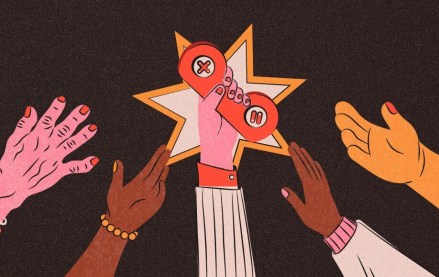Connect with execs from The New York Times, TIME, Dotdash Meredith and many more
Music promoters turn to other platforms besides TikTok to invest in as part of a broader creator playbook

With TikTok’s future hanging in the balance, music promoters are widening their focus from TikTok to creators on other short-form video platforms such as Instagram and YouTube.
Although President Donald Trump extended the deadline for the government-mandated U.S. TikTok ban on April 5, marketers of all kinds — including music promoters — remain uncertain about whether the platform will stick around in the long run. That’s why music promoters have spent 2025 investing in alternative platforms.
It has long been a standard practice for music labels and promoters to pay TikTok creators to use their songs in their videos, but three individuals with knowledge of this practice — two music promoters and a creator — told Digiday that the music industry has ramped up its spending on similar creator promotions across Instagram and YouTube, although they declined to share specific numbers. Creators charge different rates for music promotions based on their reach, with mid-tier influencers typically charging between $200 and $300 and top creators commanding rates in the thousands.
“We’re definitely seeing people opening up their scope,” said Itai Winter, vp of commercial partnerships for the music and influencer marketing platform Genni. “The biggest challenge as folks are looking into these platforms is impact because these platforms are not set up for discovery as well as TikTok.”
Indeed, although music promoters’ interest in leveraging Instagram and YouTube creators is growing, music promoters such as Winter and Futures Music Group head of digital Steve Sparrow told Digiday that these platforms’ ability to make songs go viral pales in comparison to the music-promotion power of TikTok. One reason is that music is baked into the culture of TikTok, whose origins lie in dance videos and the Musical.ly app. Another is that TikTok makes it easier for users to find their favorite viral sounds on Spotify, which allows musicians to reach the passive-listening crowd and pays more per stream on average than YouTube.
“If you go on TikTok and a sound is trending, you can tap the sound on the bottom-right corner, and the top of that page will have ‘Add to Spotify library,’” Sparrow said. “YouTube has a similar feature, but it’s an asset that lives on YouTube, and those streams aren’t as valuable.”
Regardless of other platforms’ shortcomings as music promotion channels, creators are capitalizing on the interest as music promoters look beyond TikTok. Although Winter and Sparrow said that music promoters’ rates for promotions on Instagram and YouTube were generally lower than those on TikTok — more on the $200 per song end than the thousands of dollars end — video creators such as Max Schneider are willing to take a slight pay cut if it means unlocking an entirely new revenue stream in the form of Instagram or YouTube music promotion deals.
Schneider, a video creator who started his career on TikTok but now has a larger following on Instagram, said that interest in music promotions alongside his Instagram videos has skyrocketed in 2025, although he said he wasn’t sure if this increase was explicitly the result of TikTok ban uncertainty.
Both Winter and Sparrow said that although the music industry is warming up to Instagram Reels and YouTube Shorts, this represents additional spending rather than a pullback from TikTok. TikTok is a powerful music promotion and discovery engine, and promoters plan to push their music on the platform “until the end,” per Sparrow.
Regardless of the music industry’s reasons for looking beyond TikTok, Schneider said that he welcomes the change, since it allows him to make more money without having to do any additional work beyond cross-posting his videos on both TikTok and Instagram.
“I’ll create the video and save it, but won’t post it, and then I’ll send it to [the promoter], and they’ll be like, ‘yep, that’s cool’ — there’s very rarely any feedback for it,” Schneider said. “And it’ll just be a normal video that I would make for my page.”
More in Media

Retail media meets publishing: News UK, Future and Ocado tap clean room tech for smarter data targeting
News UK, The Independent, Immediate Media and Future are teaming up with retail media network Ocado to test clean room-powered data matching.

From sidelines to spotlight: Esports events are putting creators center stage
Esports events’ embrace of content creators reflects advertisers’ changing priorities across both gaming and the wider culture. In the past, marketers viewed esports as one of the best ways to reach gamers. In 2025, brands are instead prioritizing creators in their outreach to audiences across demographics and interest areas, including gaming.

Condé Nast and Hearst strike Amazon AI licensing deals for Rufus
Condé Nast and Hearst have joined the New York Times in signing a licensing deal with Amazon for its AI-powered shopping assistant Rufus.






